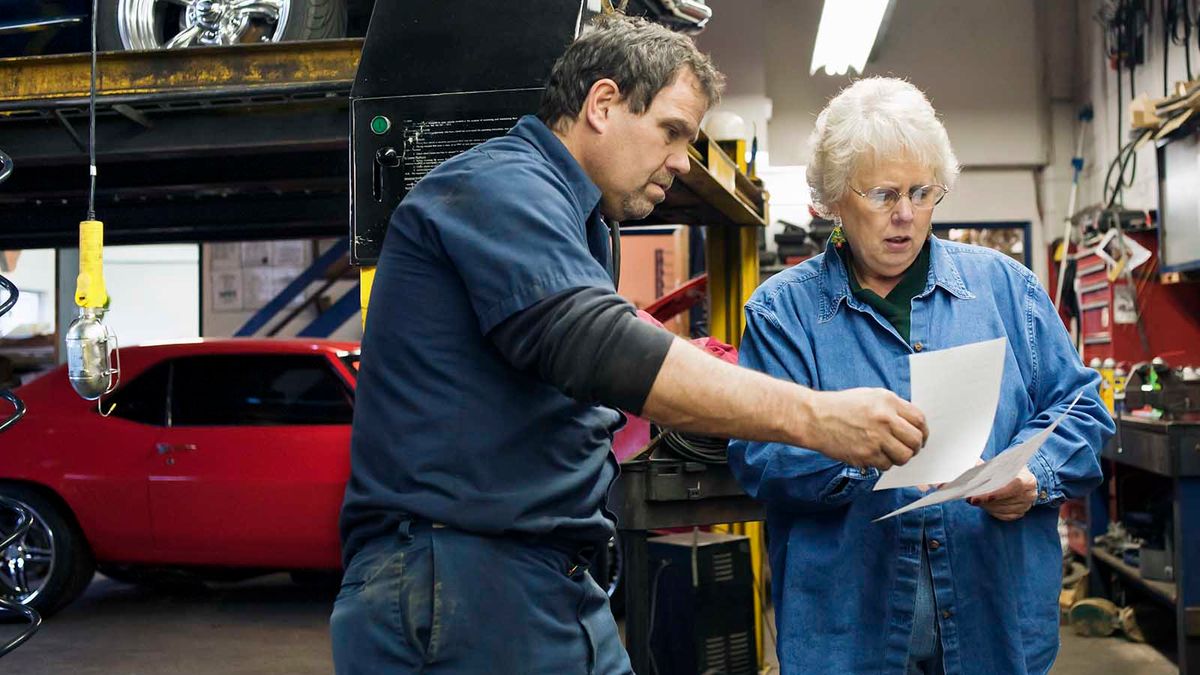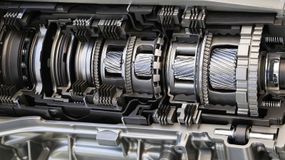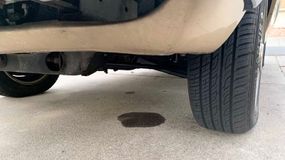
These are the top signs there may be a problem with your vehicle’s transmission:
- The car refuses to go into gear.
- It smells like something is burning.
- The car whines, clucks or hums when you change gears — or are in neutral.
- The gears are slipping.
- You have a dragging clutch.
- There is leaking fluid.
- The check engine light is on.
- The car is grinding or shaking.
- Lack of response when changing gears.
1. Car Won’t Go Into Gear

wang mengmeng/Getty Images
This one is for anyone with a manual transmission. If the transmission refuses to budge when you depress the clutch pedal and attempt to move the stick shifter, you may have a transmission issue.
It may happen when you’re trying to get into first gear from a stop or at any point when shifting gears. Common causes include low transmission fluid or wrong viscosity (thickness) of the transmission fluid, which are relatively easy fixes. It could also indicate a problem with the shift cables or clutch linkage, or, in the worst case, you may need to rebuild your transmission.
2. Burning Smell From Car
If you get a whiff of burning transmission fluid, be advised it is not the sweet smell of success. A burning, sweet smell may indicate your transmission is overheating. Transmission fluid lubricates the transmission’s many moving parts and prevents the unit from burning itself up.
Your transmission fluid might start to burn if it’s too low, potentially indicating a leak or dirty fluid that needs changing. Remember that transmission fluid isn’t the only thing that can burn in a car; if your transmission fluid is fine, you may have a blown fuse, worn-out brake pads or burning oil.
3. Transmission Noises
Every car is different, so the sounds they produce can vary greatly. Still, if you have an automatic transmission, a whining, humming or even a slight buzzing sound may indicate transmission issues [source: AutoChimps].
The sounds will usually come across as more abrupt and mechanical-sounding with manual transmissions. If you shift gears and hear a clunking sound, you must have it checked out by a professional [source: AAMCO]. But a clunking sound coming from underneath your vehicle may not always point to a transmission problem. Your constant velocity joints (CV joints) or differential could be the culprit [source: AAMCO].
Lots of noises from the transmission while it’s in neutral could signal something more serious, like mechanical wear that will need parts replacement. In this case, common culprits are a worn reverse idler gear or worn bearings, possibly coupled with worn gear teeth.
4. Gears or Transmission Slipping

Douglas Sacha/Getty Images
In a normally functioning transmission, the car stays in the gear you (or a computer) designate until you (or the computer) initiate a gear shift. But on a transmission with slipping gears, the car can spontaneously pop out of gear while driving and (in a manual) force the stick back into neutral.
Slipping transmission is unnerving at best and dangerous at worst: When you mash the gas pedal to avoid an out-of-control vehicle, the last thing you want is a transmission that doesn’t get power to the wheels. No need to scratch your head over whether this is trouble or not: If it happens, you know it’s time to have your transmission system examined.
5. Slipping Clutch

Richard Goerg/Getty Images
This transmission trouble sign haunts stick shift drivers: the dreaded dragging or slipping clutch. A dragging clutch fails to disengage the clutch disk from the flywheel when you push in the clutch pedal.
When you attempt to shift gears, you can’t because the still-engaged clutch is still spinning along with the engine. You’ll know immediately because of the grinding noise you’ll hear when you try to shift gears.
Fortunately, the most common cause for this problem is not severe or costly to fix — at least not compared to other transmission issues.
Often, the problem is too much slack in the clutch pedal. With too much free play, the cable or linkage between the pedal and the clutch disk doesn’t have enough leverage to disengage the clutch disk from the flywheel (or pressure plate).
6. Transmission Leak

Wikimedia/(CC BY-SA 3.0)
Leaking transmission fluid is one of the easiest ways to identify that your transmission needs attention. Automatic transmission fluid is vital to your car’s shifting capabilities, so a little fluid on your driveway can quickly become a major problem. Automatic transmission fluid is typically bright red, translucent and a little sweet-smelling when everything’s working correctly [source: AAMCO].
When you check your automatic transmission fluid, make sure it’s not a dark color and doesn’t have a burnt smell. If it has either of those qualities, you’ll need to take it to a mechanic and have it replaced. Unlike your car’s motor oil, the transmission shouldn’t consume or burn up any fluid during use, so if you notice you’re running low on fluid, it’s likely leaking out somewhere.
If you have a manual transmission, checking the fluid levels may be more complicated than lifting the hood and reading a dipstick. Check manual transmission fluid at the transmission case through the fill plug.
7. Check Engine Light

Douglas Sacha/Getty Images
Your car’s check engine light can be a great early indicator that something is wrong with your transmission. Newer cars have sensors throughout the engine that detect irregularities, including vibrations in the transmission.
However, your check engine light can come on for many reasons. To determine if it’s a transmission failure, you can purchase a diagnostic scan tool that you plug into your car underneath the driver’s side of the instrument panel. The scan tool will display a code corresponding to the vehicle’s problem area.
8. Grinding or Shaking
You should check the transmission fluid level if your car starts shaking or emitting grinding sounds when you accelerate. If the transmission dipstick doesn’t indicate insufficient fluid, the safest move is to bring your car into a professional transmission repair shop or garage — your clutch or synchros may be worn out, and getting them fixed sooner rather than later will save you on even more costly repairs.
9. Transmission Won’t Respond
Transmissions should go into the correct gear every time, so when they hesitate or refuse to go, it’s a sure sign there’s something wrong. With manual transmission problems, you may notice that the car’s engine will rev up after shifting into gear, but the car won’t move as quickly as the engine is running. In this case, you may have a worn-out clutch or a more serious transmission problem [source: AAMCO].
Automatic transmissions have the same lack-of-response problem, but the issue usually manifests while engaging in the “park” or “drive” selection. The car should shift quickly into either of these modes, but if your transmission hesitates to go into either one, there’s likely an issue that needs attention.






